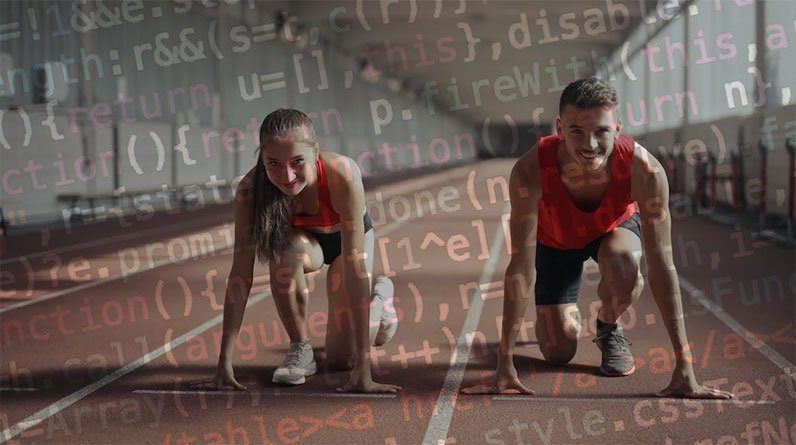
AI and Sports Medicine
The world of sports has long been a playground for human performance where athletes push the boundaries of physical excellence. Even at the recreational level, the notion of competition and performance are prevalent.
However, this pursuit of competition and athleticism comes with inherent risks, as athletes often grapple with injuries that can sideline their careers and jeopardize their long-term health.
Herein lies the pivotal intersection of artificial intelligence (AI) and sports medicine, where cutting-edge technology is reshaping how athletes train, compete, and recover.
Injury prevention and efficient rehabilitation are paramount. Injuries not only diminish an athlete’s ability to perform but also carry the potential for long-lasting consequences. The road to recovery can be arduous, and in many cases, it’s the difference between a triumphant return and premature retirement.
In conjunction with these issues, sports medicine has embraced AI as a transformative force. AI systems, armed with the capacity to analyze the entirety of information from an athlete’s biomechanics to their training regimen, offer proactive and optimal insights to reduce injury risks.
In what follows, we’ll discuss the intersection between AI innovation and sports medicine, sharing how AI might aid in injury prevention and rehabilitation optimization.
AI Aids in Injury Prevention
In the world of sports medicine, AI has emerged as a multifaceted ally in the pursuit of injury prevention. Leveraging the vast troves of data generated by athletes, AI’s role spans three critical domains: data analysis of biomechanics and performance metrics, predictive machine learning models for injury risk assessment, and the integration of wearable technology with AI feedback systems.
These innovative approaches, powered by AI, have changed how athletes and their medical teams tackle the challenges of injury prevention, helping these teams proactively detect future injuries upwards of 70%+ of the time.
Data Analysis of Biomechanics and Performance Metrics
AI’s first avenue in injury prevention involves an in-depth study of biomechanics and performance metrics.
Modern sports are awash with data, from an athlete’s movements on the field to their physiological responses during training. AI algorithms are adept at processing this wealth of information to identify specific patterns and anomalies.
For instance, during high-intensity training or competition, AI can analyze an athlete’s biomechanics in real time, pinpointing irregular movements or loading that could predispose them to injury. By tracking variables such as stride length, joint angles, and force distribution, AI can offer valuable feedback to athletes and coaches, enabling them to make immediate adjustments to reduce injury risks.
Predictive Machine Learning Models for Injury Risk Assessment
AI’s expertise extends to the area of predictive machine learning models, which are harnessed to assess an athlete’s risk of injury.
These models draw upon extensive datasets that encompass not only an athlete’s physical attributes but also their training history, medical records, and even external factors like environmental conditions. Machine learning algorithms crunch this data to identify subtle correlations and risk factors that might not be apparent through traditional analysis.
An AI-powered model could identify that athletes with a specific combination of genetic markers, training intensity, and recovery patterns are at an elevated risk of a particular injury. With this insight, medical teams can tailor preventive interventions, such as customized training regimens or targeted physical therapy, to mitigate the identified risks and keep athletes performing at their best.
Wearable Technology and AI Feedback Systems
Finally, the integration of wearable technology with AI feedback systems represents a groundbreaking approach to biomechanical feedback and injury prevention. Athletes can now wear devices like smart sensors, which continuously collect real-time data on their movements, physiological responses, and even sleep patterns.
AI algorithms process this data and provide athletes with instant feedback on their performance, highlighting areas where they might be overexerting themselves or displaying suboptimal biomechanics. These systems can also predict when an athlete might be approaching a state of overtraining, a common precursor to injuries. By receiving timely warnings and performance optimization recommendations, athletes can proactively adjust their training and recovery routines, reducing the likelihood of injuries caused by overexertion or fatigue.
AI and Rehabilitation Optimization
The utilization of AI extends beyond injury prevention; it’s also critical in the rehabilitation process.
AI plays a pivotal role in the customization of rehabilitation plans, aligning them with an athlete’s unique needs and accelerating the path to recovery.
AI plays a pivotal role in optimizing athletic rehabilitation in two key areas: personalized treatment plans and motion analysis. In the first area, AI assesses the severity of an athlete’s injury and individual factors like age, previous injuries, and fitness level to create tailored rehabilitation plans. It dynamically adjusts these plans in real-time based on the athlete’s progress, ensuring optimal recovery.
In the second area, AI uses computer vision to provide precise motion analysis, tracking an athlete’s movement patterns during exercises and providing real-time feedback. This technology identifies abnormal patterns that could exacerbate injuries and offers immediate guidance on form and technique, enhancing the effectiveness and safety of rehabilitation exercises.
Final Thoughts
AI’s integration into the realm of sports medicine and rehabilitation optimization marks a tremendous advancement in athlete care. As AI continues to evolve, its capacity to individualize rehabilitation and enhance movement analysis promises to reinvigorate the recovery process, empowering athletes to return to their peak performance levels while minimizing the risk of future setbacks.
